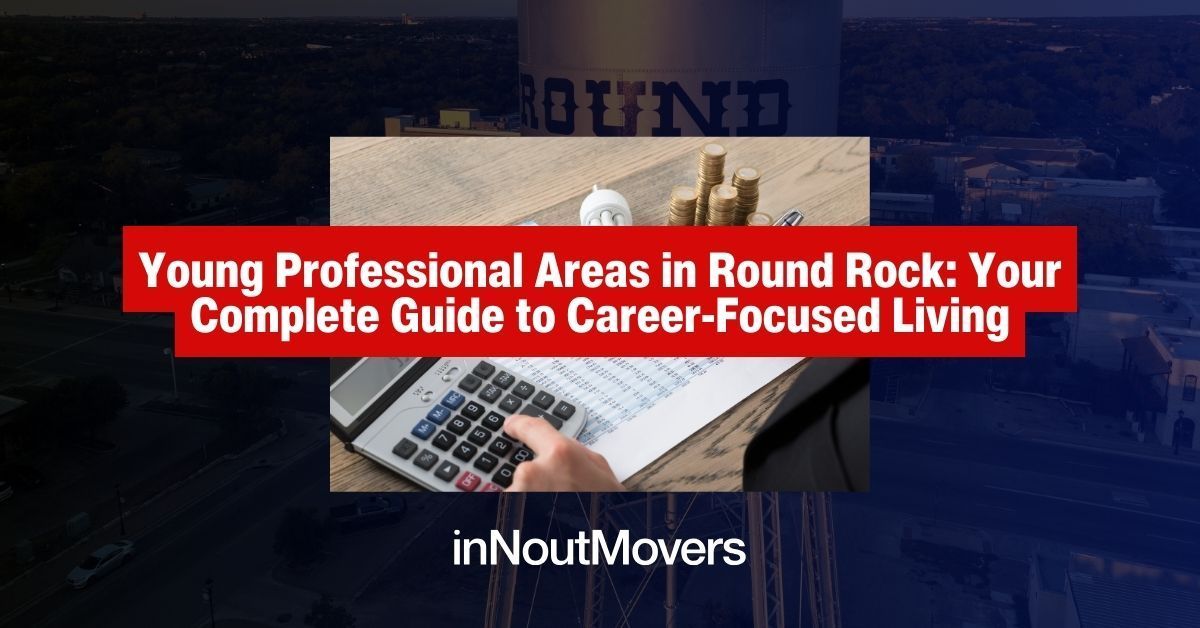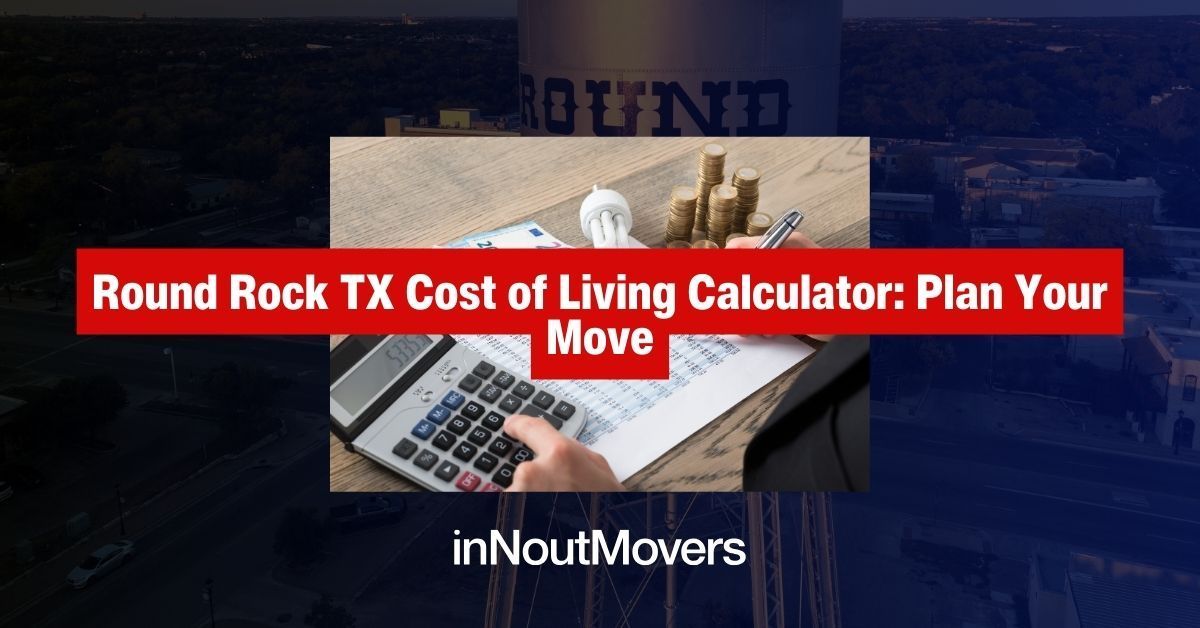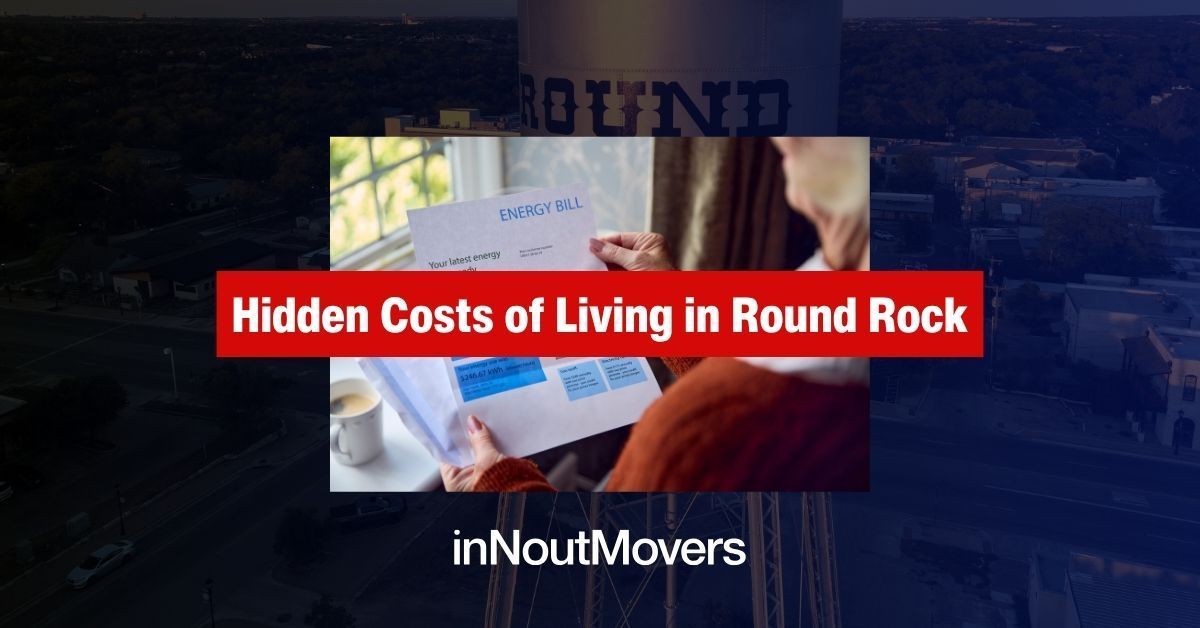How Much do Movers Cost in Austin?
Darion Pugh • February 3, 2022
Moving to a new home or apartment in Austin can be incredibly exciting. However, it also means you’ll have to deal with packing up and transporting your entire life. Whether you’re moving right across the street or on the other side of the city, the process can definitely be a hassle.
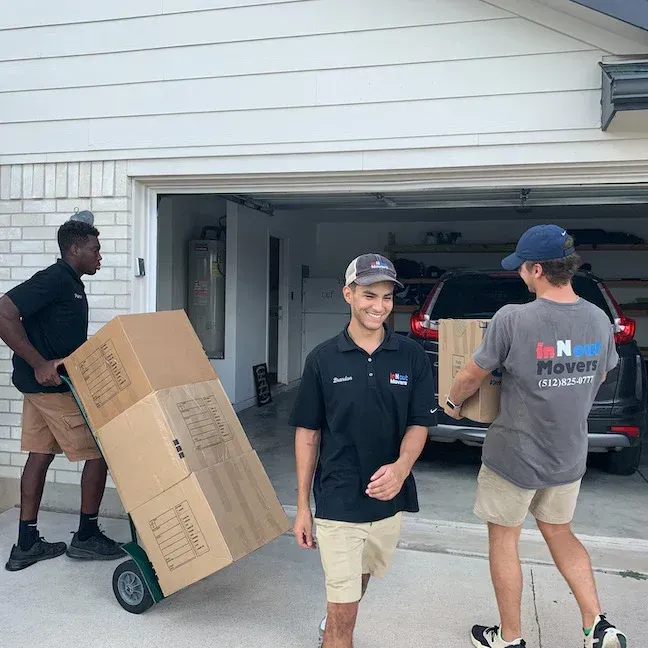
Luckily, the city of Austin Texas is a great place to live and hire a professional mover.
In addition to being the capital of Texas, nearly 2 million residents call the growing metropolitan area their home. It’s considered the fourth-largest city in Texas and the eleventh largest in the entire country. Austin is also well known for its University of Texas campus, its eclectic live-music scene, and natural spots perfect for a hike or a bike.
When the moving process gets especially tough, a professional can be there to guide you through the planning and organizing. This can free your valuable time to worry about other logistics of your trip and save your back from some sweat-inducing physical labor. Though you might be able to save a buck or two by packing on your own, you’ll find that a professional mover can get the job done in a far more efficient manner.
Hiring professional movers in Austin is a convenient solution because you can customize the specific services you need. Whether you need packing, hauling, unloading, or just about everything in between, your professional movers can get the job done. However, the cost of hiring movers in Austin can vary based on several factors.
Let’s take a closer look at how much movers cost in Austin so that you can better rearrange your budget and get your move on
Moving Distance in Austin
One of the biggest factors in determining the cost to hire movers is the distance.
At around 271.8 square miles, Austin is by no means a small city. However, if you’re moving locally within the city to another neighborhood, then your moving costs are generally going to be cheaper than a more long-distance move.
Long-distance moves still vary in costs themselves, depending on the supply and demand of where people are moving across the country. All variables aside though, it helps to remember that your costs for a long-distance move will be around two times as much for a local trip.
Don’t forget to pay attention to the different regulations and rules that oversee interstate and intrastate relocations as you’re searching for the right company.
Figuring Out the Cost to Hire Movers in Austin
Your costs of hiring a mover in Austin are naturally higher if you occupy a larger residential space. Here’s the breakdown of what Home Advisor says you can expect for your local moving costs in Austin.
- $420 to $600 for a studio/one-bedroom apartment
- $420 to $900 for a two-bedroom apartment
- $630 to $1,100 for a three-bedroom apartment
- $1,100 to $2,000+ for a four-bedroom apartment
For long-distance moves, your costs will be calculated from the weight of your items instead of your residential space. The general rule of thumb is that you’ll have to pay about $0.70 per pound of items shipped over every 1,000 miles transported. Keep in mind that this total doesn’t include any extra fees. You can figure out your estimated cost based on the weight of an average basket of goods found in homes of different sizes.
- Studio apartment: about 1,800 pounds
- One-bedroom apartment: 2,200 to 3,200 pounds
- Two-bedroom house: 5,000 to 6,000 pounds
- Three-bedroom house: about 9,000 pounds
Let’s say you only do need to transport your items across 1,000 miles. What would your costs for hiring professional movers look like then?
- 1,800 pounds * $0.70 = $1,260
- 3,200 pounds * $0.70 = $2,240
- 6,000 pounds * $0.70 = $4,200
- 9,000 pounds * $0.70 = $6,300
While these estimated costs are there for you to set a budget, you’ll also have to factor in the room or extra fees and tips. The latter of the additional costs usually comes in the form of cash that you’ll hand over on a moving day, provided all your household items arrive in a timely and safe manner. In general, most people tip their movers about 15 to 20 percent of the final cost for long-distance moves and only about 5 to 10 percent for local moves.
Those moving prices above might not encompass all of the professional services you need. If you want to leave everything in the moving process to the experts, then what you’re looking for is a full-service move. This means that your movers will pack up all of your household belongings into boxes, safely load them into the back of their moving trucks, haul them, and drop off everything within your new home in Austin. They can even unload your items and place them in the right spots for you.
Because this requires a larger investment in time on behalf of your professional movers, they’ll likely charge more. The unpacking service might even have a payment structure that works where you pay by the hour, with a range of around $25 to $50 an hour per mover. If you don’t want to get into the nitty gritty details, then you can set yourself some extra wiggle room in your budget by putting $400 aside.
Extra Moving Costs to Hire Professional Movers in Austin
The costs above really only consider the largest factors of a relocation like distance, time, and total item weight. If you want to know how much it actually costs to hire a professional mover in Austin, you have to consider the extra fees that exist. Let’s take a look at what might apply to you as you search for your best fit Austin moving company:
- More movers. If your moving company determines that they’ll need to bring more men along to finish your local move, then you’ll typically see these fees added on.
- Flight charge. Moving up and down flights of stairs can be challenging for movers carrying large boxes. To accommodate for the extra risk it takes to safely transport your items, you’ll be charged per flight of stairs.
- Elevator charge. Sometimes, you might be charged extra when your movers have to move and haul items up and down an elevator.
- Guaranteed delivery date. When you’re planning a long-distance move, it can be incredibly helpful to know the exact date and time you can expect your belongings to arrive. However, this piece of insight does tend to cost you a little.
- Appliance charge. When you have large appliances that need to be transported like your refrigerator, washer, dryer, or dishwasher, you’ll usually see an extra charge on your total moving bill. This cost does still include installation, so you won’t have to worry about that.
- Storage in transit (SIT). What happens when your household items arrive, but your new home in Austin isn’t ready to receive them? Your moving company will bill you a storage in transit fee, which means you’ll have to pay for the extra time it takes for the company to store your items before they can move them in.
- Long carry fee. If the distance from your front door to the moving truck on the street is longer than average, you’ll typically see a long carry fee added to the final bill.
Even though this list includes some of the most common extra fees you’ll encounter when hiring movers, it’s by no means exhaustive to every company out there in Austin. The best practice in your research is to always ask about the additional fees that exist for every moving quote you inquire about! Then, you can organize the companies you’re considering on a list and do some cross comparison.
Estimated Costs for Renting a Moving Truck in Austin
In an effort to cut some costs here and there, you might choose to skip the full service and try to rent instead. So how much exactly does it cost to rent a moving truck? Take a look at the estimated figures below.
- Base Cost: $19 to $55 per day
- Mileage Fee: $0.65 to $0.99 per mile
- Fuel Cost: Depends on driving distance
- Truck Coverage: $20 to $55 based on coverage level
- Parking Permit (if needed): $25 per day
- Equipment costs (if needed): Dolly, straps, blankets
As a baseline measure, moving your items from a classic one-bedroom apartment in Austin within a local 15-mile radius should cost you about $35 to $65 for a truck rental. If you want to move your items from a larger place with five bedrooms instead in the same distance, the cost should end up anywhere between $160 to $180 to rent a moving truck.
Estimated Costs for Renting a Moving Container in Austin
If you want to go with the cheapest moving route that requires more time and labor on your behalf, then renting a moving container in Austin is your solution. These containers essentially function as storage sheds on wheels. Once they’re delivered to your home, you do all the work of packing, loading, and hauling before the company picks the container up and stores it until you’re ready to move everything into your new place.
Apart from all the inconveniences that come with a more hands-on moving process, renting a moving container gives you the advantage of storage. This can especially come in handy when you’re not sure when you can begin moving into your new home in Austin. Let’s take a look at what renting one will cost you:
- Storage Fee: $65 to $275 per every 30 days
- Initial Delivery: $70 to $95
- Final Delivery: $70 to $95
- Damage Coverage: $10 to $350 depending on coverage level
- Parking Permit (if needed): $25 per day
- Door Lock (if needed): $10 to $15
An average container will hold about 3 rooms worth of stuff at maximum. If you need more moving containers, your costs will likely double.
10 Tips for Maximizing Your Moving Process in Austin
Let’s face it – there’s a lot that can go wrong with a move. From traveling logistics and missing items to valuable furniture and more, you’ll need to be well prepared to create a smooth moving process in Austin.
Luckily, here at inNout Movers, we’re here to provide our 10 best moving tips so that you can enjoy a quicker and easier move to your new home in Austin.
Purge what you don’t need
Resist the urge to jump and pack everything right away. Instead, give yourself some breather room by setting a day aside to clear the clutter. Chances are, there are a lot of items you can get rid of and won’t need to take with you. At the end of the day, you’ll be left with less to pack and enjoy lower moving costs.
Collect all your moving papers
Got new addresses, purchase papers, or moving contracts? Gather them all together in one place, ideally on hard copy in a folder that you can store in a safe place. This resource will prove extremely valuable if a question ever pops up during the moving process itself. You’ll have the records all in hand in case anything goes wrong.
Pack as early as possible
Unless you’re planning a last-minute move to Austin, you’ll probably know about your move well in advance. With weeks and months ahead of you, your future self will thank you if you begin packing now. Start with off-season items that you don’t need now, like winter coats if in the summer season. By the time the big day comes, you’ll be far less stressed and enjoy a smoother transition to Austin.
Hire professional movers early
If you know you’re going to need professional moving services, it’s best to hire now rather than later. Arranging everything takes time, so you’ll want to make sure the professional knows how they can meet your needs. In addition, you might save yourself some money in hiring costs and get a head start before peak moving season.
Plan for utilities
The last piece of news you’d want to hear upon arriving in Austin is that your new home doesn’t have running water, electricity, or heat. By contacting your utility providers and scheduling your service early, you’ll save yourself from this massive headache.
Leave out the bare necessities
Just in case things take a turn for the worse on your moving day, you’ll be able to take it easy with your essential items next to you. That’s because you made sure to diligently pack a change of clothes, your toothbrush, some toiletries, and other necessities with you in a small bag the night before.
Gather your packing equipment
Before you start packing up your belongings, try to see if you’ll have enough supplies for everything you need. Make sure you have your box cutters, packaging tape, markers, towels, and other items in a large enough quantity. That way, you won’t have to worry about wasting time making another trip to the store.
If there’s something big that you can’t necessarily buy from a store, you can try renting moving equipment from a professional moving company in Austin that you trust.
Pack smart
When you have larger or heavier items, try to pack them in smaller boxes so that your professional movers have an easier time carrying them. Your lighter items like pillows and clothes can go in bigger boxes. Try to fill in any gaps with clothes or packing paper so that your boxes don’t feel loose. While hauling your boxes onto the moving truck, try to keep the heavier boxes at the bottom and then add the lighter ones on top.
Label your boxes
You could try to remember the contents of each box, but you’ll most likely forget as the moving process drags on. That’s why you should grab a market and briefly jot down what’s inside each box and where it should end up in your new Austin home. This will greatly increase the efficiency of your moving process and speed up the time your moving professionals take to unload.
Secure your boxes
You don’t want to be carrying a large and heavy box only to have it break in your arms as you’re climbing the stairs. To prevent this nightmare scenario, you’ll want to invest in some heavy-duty packing tape and seal up the box as well as you can. You should not only close up the bottom and top seams but also wrap around the entire box several times until everything feels snug and secure.
Final Thoughts
Need to hire professional movers in Austin, Texas? Then you’ve found the right place. Here at inNout Movers, we’re a locally owned and operated moving company that serves the entire central Texas area. Our goal is to make your moving experience as enjoyable and stress-free as possible. Contact us today for your free quote! We can’t wait to help you start a new chapter of your life in Austin.
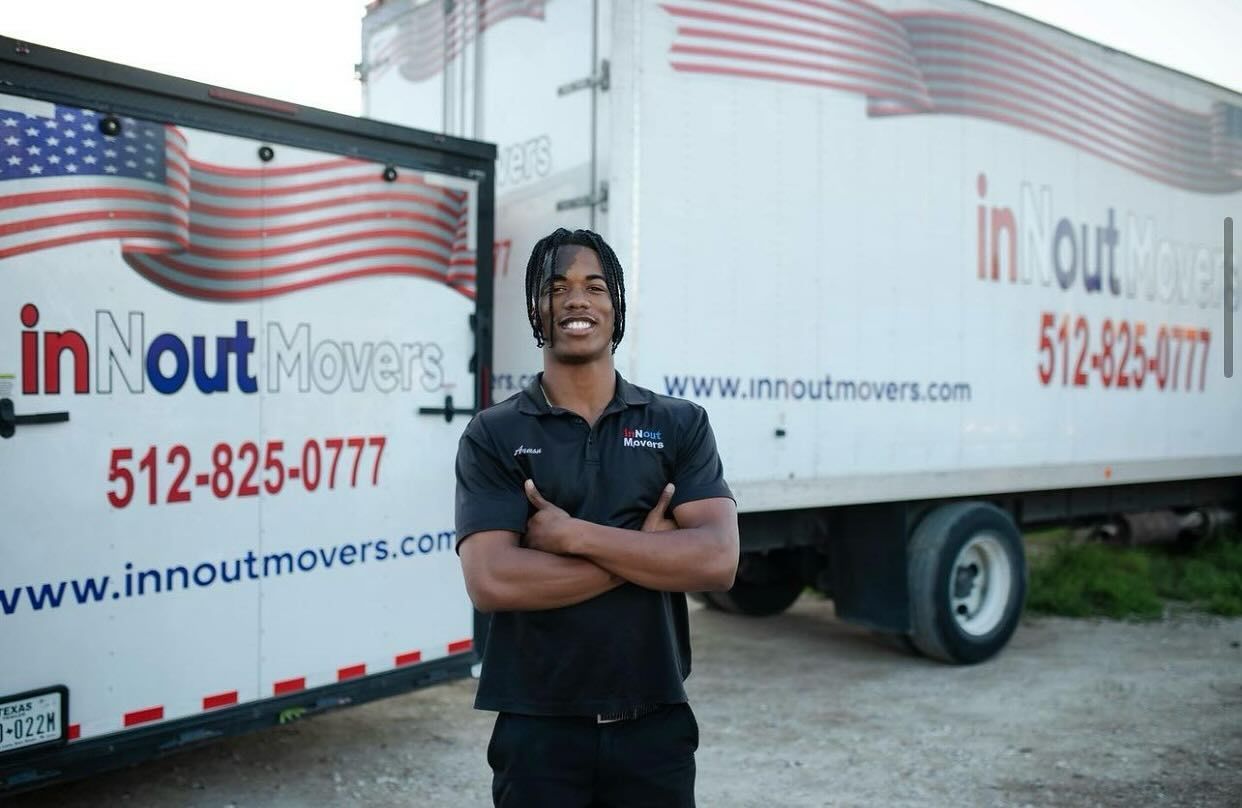
InNout Movers: Your Texas Relocation Experts
